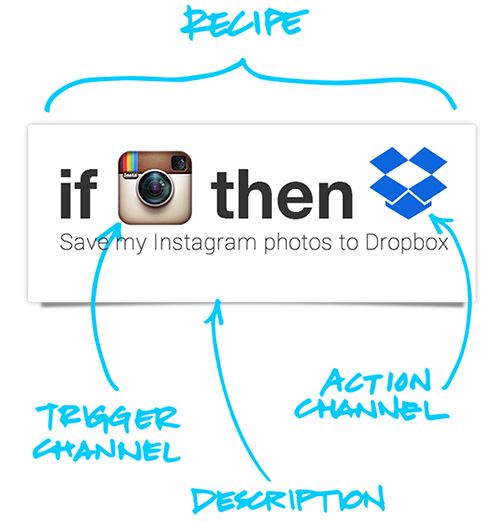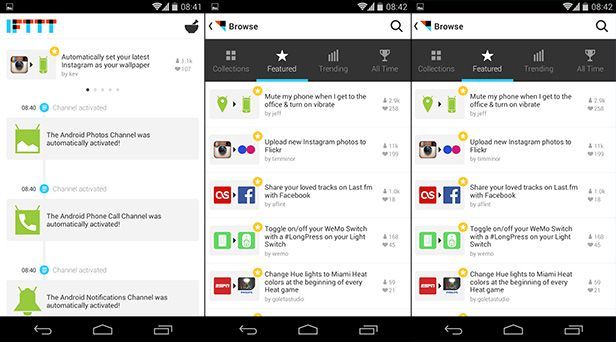One of the goals of technology is to be able to automate a task so that it ca be done with no need of human intervention. IFTTT is a tool based on this philosophy, and allows the creation of automated actions according to the premise “If this, then that” so that your services and apps carry out actions if certain things happen. There was already a web version and iOS app for this, and now it’s also arrived for Android.
What is IFTTT?
“If this, then that” is both the name and the operating logic of IFTTT. The “this” is the trigger, that is, the action that sparks a consequence, and the “that” is the action to be carried out. Both elements can be customized as desired based on hundreds of actions. To give a few examples:
- If I’m in the office, put my phone on vibrate.
- If I upload a photo to Flickr, publish it on Facebook as well.
- If it’s going to rain tomorrow, let me know with an alarm on my phone.
- If I get a phone call from a certain number, record it and store it on Dropbox.

The program doesn’t exactly have a life itself to do these actions. The key lies in the fact that it’s compatible with 98 popular services and apps, meaning that some interact with others, linking apparently disconnected actions, from Gmail to Instagram through to Feedly, Evernote, WordPress, or SoundCloud, to mention just a few.
How do you create your own “recipes”?
There are as many combinations as there are user needs. In fact, from the service you can access a list with recipes created by the community, comprising different categories and catalogued by date and relevancy. However, the really interesting thing is creating your own combinations.

Once you’ve registered on the service and logged in to the app, from the morter icon in the upper right part of the screen you can create a new recipe, with options to select from already-set recipes or build your own. In the latter case, it’s as easy as selecting the trigger action and the action to be carried out. The process is very intuitive and within each associated app there are a series of typical actions that you can select. For example, if you tick Facebook as the trigger, you can specify if the consequent action should occur if someone comments on your wall, if you write something there yourself, or if you receive a particular notification from the social network.





